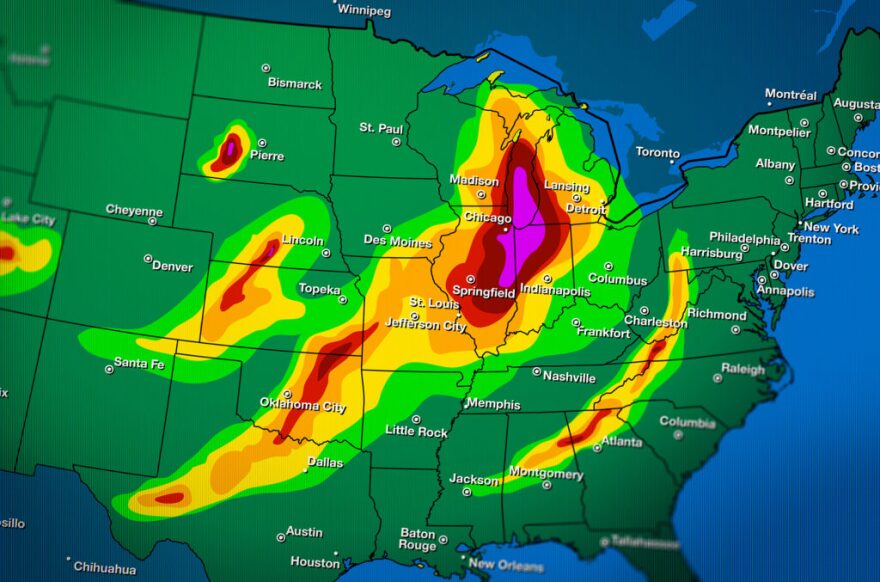While they regularly go head-to-head on the football field, basketball court, and in other sports venues, when it comes to Georgia weather, the University of Georgia and Georgia Tech are partners, not adversaries.
The two institutions are working together to purchase a state-of-the-art weather radar system, which university officials hope will improve North Georgia’s forecasting coverage, and expand educational and research opportunities.
The new radar system will be housed in Gwinnett County, and provide information to the National Weather Service in Peachtree City and other organizations.
Underreported severe weather threatens North Georgians’ life and property. University officials say the radar addresses a gap in coverage in northeastern Georgia and near Hartsfield-Jackson Atlanta International Airport.
Besides improving North Georgia’s safety, officials say the radar system creates educational opportunities for students and research opportunities for UGA’s Atmospheric Science Program, Georgia Tech Research Institute’s Severe Storms Research Center, and Georgia Tech’s School of Electrical and Computer Engineering.
John Knox, Josiah Meigs Distinguished Teaching Professor in the UGA department of geography, says the radar will provide meteorology students valuable work experience. UGA’s “WeatherDawgs,” the student-run digital meteorology program, serves over 70,000 North Georgians.
“The radar would allow UGA students to learn how to view, interpret and use X-band radar data as well as how best to communicate it to the public,” Knox said.
The Furuno WR-2100 radar system will be operational after testing is completed by the Georgia Tech Research Institute’s Sensors and Electromagnetic Applications Laboratory and the Aerospace, Transportation and Advanced Systems Laboratory.


